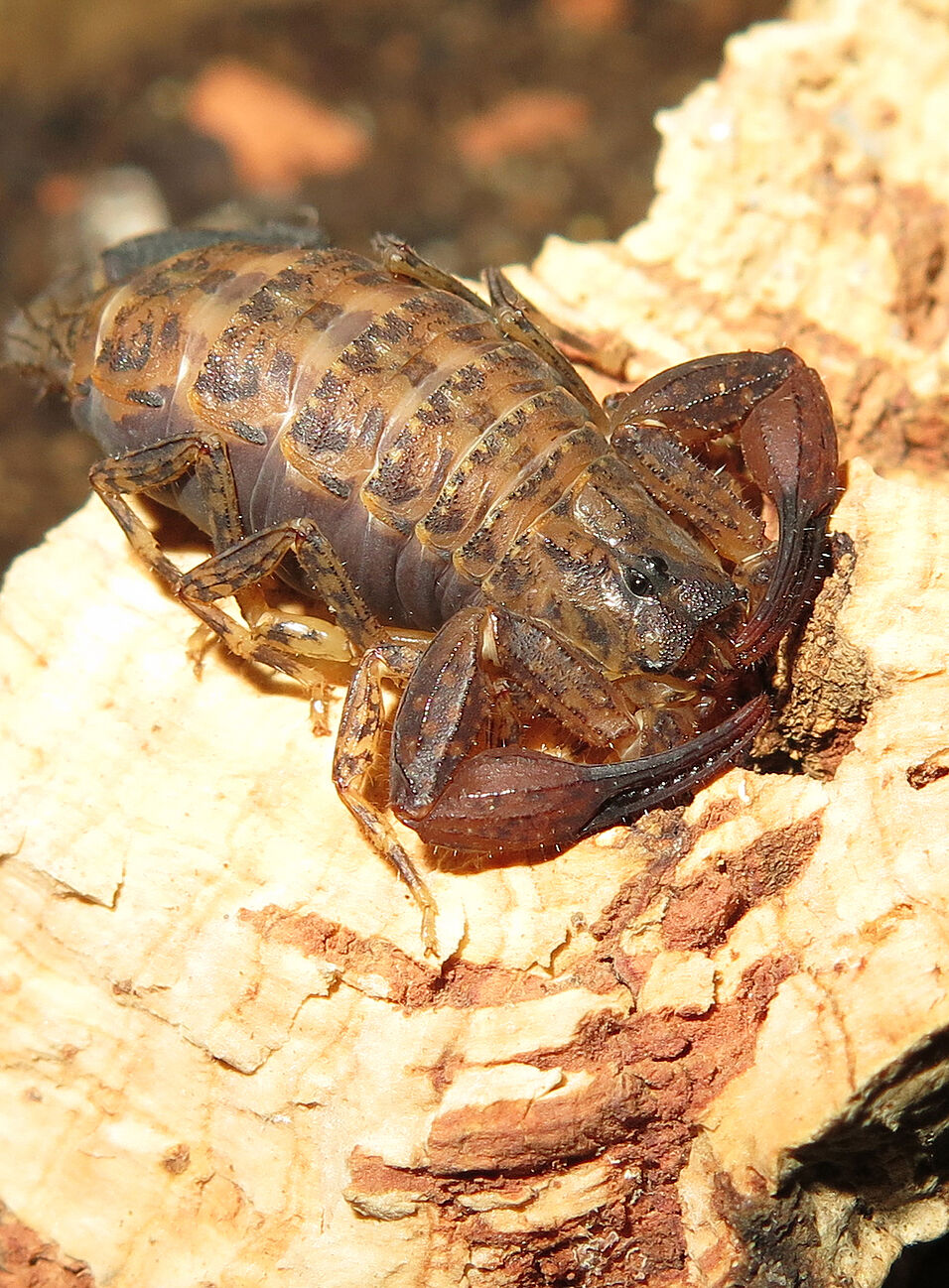Seiter M, Mosetig L & Milasowsky N.
Invertebrate Reproduction & Development, DOI: 10.1080/07924259.2020.1806119. Published online 20 August 2020
Abstract
Scorpions often experience food shortages, yet information on their baseline nutritional input is lacking. In many life histories, there is a trade-off between adult size and development time that is interrelated with food availability. We present precise data on the influence of two different feeding regimes that affect development in the buthid scorpion Tityus neibae. The results indicate a strong relationship between the treatment group, sex, morphometrics and life stages. The different diet inputs had no influence on the embryonic development or the litter size but had a major effect on the postembryonic development time and on the life stage when individuals reached maturity. No females or males reached maturity by the 4th instar when fed every two weeks and only males that were fed weekly were able to reach maturity by the 4th. Thus, a trade-off in T. neibae males is apparent, since they can reach maturity earlier in life, resulting in an overall smaller body size that may reduce the risk of predation. By contrast, females may have beens elected to reach full development with an overall larger body size that results in an increase in the fitness, the number, or the size of the offspring.

